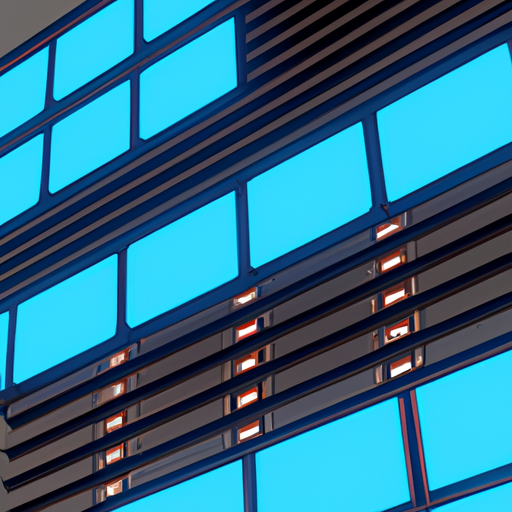The Ultimate Guide to 3D LED Display Manufacture: Innovations and Industry Insights
Introduction to 3D LED Display Manufacture
3D LED displays have revolutionized visual technology by adding a new dimension to advertising, entertainment, and presentations. In this comprehensive guide, we delve into the intricate world of 3D LED display manufacture, exploring the technical nuances, industry trends, and future prospects.
What is a 3D LED Display?
A 3D LED display involves the use of light-emitting diodes to create vivid, three-dimensional images. Unlike traditional 2D screens, 3D LED displays give viewers a sense of depth and realism, making the visuals more engaging and immersive.
How Does 3D LED Display Technology Work?
Mechanics of 3D LED Displays
Holographic Imaging: This technology projects free-standing 3D images in the air without the need for a screen.
Polarized Light: Uses polarization to separate images for each eye, creating a 3D effect without glasses.
Autostereoscopic Displays: These displays do not require special glasses and employ lenticular lenses or parallax barriers to show different images to each eye.
The Role of LEDs
Brightness and Color Quality: LEDs are known for their superior brightness and color saturation, essential for creating lifelike 3D visuals.
Pixel Density: Higher pixel density results in finer details and smoother images, crucial for high-definition 3D displays.
The Manufacturing Process of 3D LED Displays
Design and Prototyping
Conceptualization: The initial phase involves brainstorming and sketching designs for the display.
Software Modeling: Advanced software tools are used to create life-like models of the display.
Prototyping: A physical prototype is built to test and refine the design.
Component Sourcing
LED Chips: High-quality LED chips are sourced, typically from leading manufacturers like Nichia and Cree.
Circuit Boards: Custom-designed PCB boards are essential for managing the electrical pathways of the display.
Optical Lenses: Precision lenses are used to enhance the clarity and depth of the 3D images.
Assembly and Calibration
Robotic Assembly: Automated robots assemble the components with high precision.
Quality Control: Every unit undergoes rigorous testing for brightness, color accuracy, and structural integrity.
Calibration: Each display is calibrated to ensure uniformity in image quality and depth perception.
Leading Manufacturers in 3D LED Displays
Several companies are at the forefront of 3D LED display manufacture. These include:
1. Shenzhen Unilumin Group Co., Ltd.
Renowned for their cutting-edge technology and extensive range of 3D LED products.
2. Leyard Optoelectronic Co., Ltd.
A global leader, Leyard excels in innovative designs and high-quality displays.
3. AOTO Electronics Co., Ltd.
Specializes in both indoor and outdoor 3D LED displays, offering robust and reliable products.
Key Applications of 3D LED Displays
Advertising and Marketing
Retail Spaces: 3D LED displays create dynamic and eye-catching advertisements, boosting customer engagement.
Outdoor Billboards: These displays can make outdoor ads more memorable with their vivid 3D effects.
Entertainment and Gaming
Theme Parks: 3D LED displays are used in rides and attractions to create immersive experiences.
Cinemas: Enhancing movie-watching experiences with lifelike 3D visuals.
Corporate and Educational Sectors
Presentations: Make data and product demos more engaging with 3D visual aids.
Simulations: Used in simulations for training in fields like medicine and engineering.
Future Trends in 3D LED Display Manufacture
Advanced Technology Integration
5G Connectivity: Faster data speeds will make real-time 3D streaming a reality.
AI and Machine Learning: Can enhance image rendering and real-time adjustments for improved viewer experience.
Increased Customization
Modular Designs: Allow for customized shapes and sizes based on client requirements.
Interactive Displays: Combining touch and gesture recognition for interactive 3D experiences.
Challenges in 3D LED Display Manufacture
High Production Costs
The complexity of 3D LED technology makes the initial production costly, although economies of scale are gradually reducing prices.
Technical Limitations
Viewing Angles: Maintaining consistent 3D effects across wide viewing angles is still a challenge.
Calibration Issues: Precise calibration of light and color across the display is crucial for maintaining high-quality visuals.
Conclusion
3D LED display manufacture is an intricate field that combines advanced technology with innovative design principles. With applications spanning various industries, the future of 3D LED displays looks incredibly promising. Keeping abreast of technological advances and market trends will be key for manufacturers aiming to lead this dynamic market.
We trust that this comprehensive guide provides valuable insights into 3D LED display manufacture. For further updates and detailed inquiries, we recommend visiting industry leaders such as Unilumin and Leyard.

